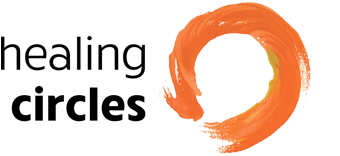 Deeply buried
Deeply buried
Note: One of the agreements that serves as the foundation of healing circles is confidentiality, and that makes it challenging to give you an idea of what it’s like to take part in one. Billy gave me permission to share the following story with you.
Billy’s mauve cotton headscarf reminded me of the head coverings many people wear when bald from the side-effects of chemotherapy, but I hadn’t attributed Billy’s bandana to cancer until later, when I arrived home from the conference and read his blog. Billy identifies himself as a “Stage IV prostate cancer thriver.”
I was immediately drawn to Billy when he told us how he taught “beading” to patients at the MD Anderson Cancer Center in Texas. I could picture this warm, kind, bright-eyed, sixty-seven-year-old man helping people with neuropathy in their fingers from chemo, thread brightly-colored beads onto strings, each one symbolizing an act of courage.
In March 2016, thirty-seven people from across North America were invited to the Healing Circles Conference at Commonweal, in Bolinas, California. Our Callanish team from Vancouver led a grief circle whereby all participants who wished to could share losses from their work and their lives. A large brass bowl was filled with water and placed in the center of the circle as a symbol of our tears, and smooth, round stones were piled high around the bowl, embodying the weightiness of our unattended sorrows. Each person chose one rock for each loss experienced, and wrote a word, or a name on the rock to identify each sorrow. Many people spoke of losing family members, friends, and colleagues to cancer, and the ensuing weariness that comes from years of witnessing suffering. The vulnerability of one person encouraged another to speak.
An hour or so into the sharing, I noticed Billy’s hands trembling as he opened and closed his fist around three small stones. Each one had a name printed on it.
“It started yesterday, when Steve told me he had also served in Vietnam and asked me where I served. I told him I don’t talk about it,” Billy said, his face wrought with anguish.“ And then Nebraska limped back into my dreams last night. Early this morning, after a walk along the cliff, the visions returned: flag-draped caskets, the bodies of my friends, the beggars on street corners back home, too traumatized to reconnect with life again.” Billy rolled the stones between his hands as he spoke, as though he was soothing the bodies of his friends back to life with his love and regret.
The story that had been buried deep in the unreachable recesses of Billy’s heart spilled out into the circle. Billy had served as an airborne ranger in Vietnam and watched three of his men die in unthinkable ways. He had tried for years to push the memories away from his thoughts, prayers, and dreams.
Waves of words and deep feelings washed out of Billy’s heart and soul as the circle held him in silence. It was then that Steve stood up, pushed his chair back and walked slowly behind the circle of chairs until he stood at the back of Billy’s chair. Steve then leaned in and gently wrapped his arms around Billy’s chest, their faces touching. The men held on to each other and wept for what seemed like a very long time.
When Billy lifted his head, I knew he was through the worst of the memories, and when he dropped to his hands and knees and crawled to the bowl of water to drop his stones in, and then lifted handfuls of water to his head and face, I knew that his deep healing had begun.
Steve told me later that he, too, was healed in the process. “There was a palpable sense that Billy and I were both being held and supported by the focused and loving intent of everyone else in the room. In those moments, for the first time in my life, I felt my authentic self—who I am and what I’m really made of. The inherent goodness in my heart and soul that I hadn’t known was there had been revealed to me.”
Later that same day, Billy’s new friends and the wild purple irises in the meadow looked on as he tucked his three rocks into the dark clay soil on the cliff edge, alongside others’ rocks of loss. Billy had tended his sorrows and, in so doing, had deeply honored his three friends, as well as each one of us in the circle who are forever changed by one man’s unwavering courage to heal.
May we all find community to help one other attend to our unattended sorrows before we leave this world.
Janie Brown is the executive director of the Callanish Society, a nonprofit organization she co-founded in 1995 for people who are irrevocably changed by cancer and who want to heal, whether it be into life or death. She is currently working on her first book.
Header photo courtesy of Healing Circles Houston
Photo above courtesy of Gift of Compassion



